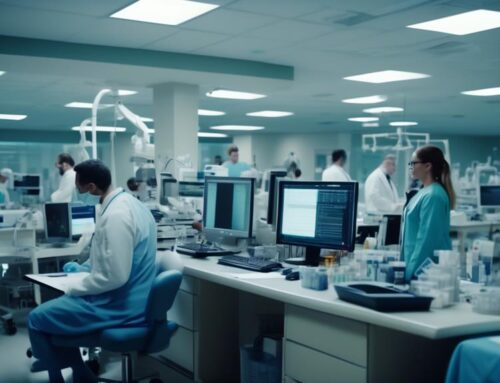Imagine your medical data as a precious gem, delicately carved and encrusted with invaluable information about your health. Now, picture a thief lurking in the shadows, waiting for a moment of vulnerability to snatch that gem away. Just like in the world of gemstone heists, the security of medical data entry is of utmost importance. In an era where technology reigns supreme, the question arises: how secure is your medical data? While you may assume that stringent measures are in place to protect your information, the reality is far more complex and nuanced.
Health Data Privacy Measures
To ensure the confidentiality and security of medical data, robust health data privacy measures must be implemented. Data breaches can have severe consequences, including the unauthorized access, use, or disclosure of sensitive patient information. These breaches can lead to reputational damage, financial losses, and legal liabilities for healthcare organizations. Therefore, it is crucial for healthcare professionals to receive cybersecurity training to protect patient data effectively.
Cybersecurity training equips healthcare professionals with the knowledge and skills needed to identify and mitigate potential security vulnerabilities. This training includes understanding the importance of strong passwords, recognizing phishing attempts, and implementing encryption techniques to protect data at rest and in transit. By training healthcare professionals in cybersecurity best practices, organizations can reduce the risk of data breaches and enhance the overall security posture.
Additionally, healthcare organizations must implement technical safeguards to protect patient data. These may include access controls, encryption, and secure communication channels. Regular risk assessments and audits can also help identify any vulnerabilities and address them promptly.
HIPAA Compliance Requirements
Healthcare organizations must adhere to HIPAA compliance requirements to ensure the confidentiality and security of medical data. Failure to comply with these requirements can have serious consequences, including data breaches and legal penalties.
Under HIPAA, healthcare organizations must implement safeguards to protect electronic protected health information (ePHI). This includes conducting regular risk assessments, implementing access controls, and encrypting data. In the event of a data breach, organizations must promptly notify affected individuals, the Department of Health and Human Services (HHS), and potentially the media. The consequences of a data breach can be severe, including reputational damage, financial loss, and potential lawsuits.
HIPAA also mandates patient consent requirements for the disclosure of medical data. Covered entities must obtain written authorization from patients before using or disclosing their protected health information (PHI), except in certain circumstances such as treatment, payment, or healthcare operations. This ensures that patients have control over their own medical information and can choose who has access to it.
To ensure compliance, healthcare organizations should regularly review and update their policies and procedures, train employees on HIPAA requirements, and conduct audits to identify any potential compliance gaps. By adhering to HIPAA compliance requirements, healthcare organizations can mitigate the risk of data breaches and maintain the trust and confidence of their patients.
Data Encryption Techniques
Data encryption techniques play a critical role in ensuring the security and confidentiality of medical data. With the increasing data breach risks in the healthcare industry, it is crucial to implement robust encryption methods to protect sensitive information. Encryption involves encoding data in such a way that it becomes unreadable without the appropriate decryption key. This ensures that even if unauthorized individuals gain access to the data, they will not be able to understand or use it.
Various encryption algorithms are used to secure medical data. The most common ones include Advanced Encryption Standard (AES), Rivest-Shamir-Adleman (RSA), and Triple Data Encryption Standard (3DES). These algorithms use complex mathematical functions to transform the original data into ciphertext, which can only be reversed to plaintext using the correct decryption key.
Data encryption is applied at different levels, including data in transit and data at rest. For data in transit, encryption ensures that information is protected when it is being transmitted between systems or networks. This is particularly important when data is being sent over the internet or through other insecure channels.
On the other hand, data at rest refers to information that is stored in databases, servers, or other storage devices. Encryption is applied to this data to prevent unauthorized access in case of physical theft or unauthorized access to the storage device. Encrypted data is useless without the decryption key, which adds an extra layer of protection.
In addition to encryption techniques, healthcare organizations must also consider secure data storage methods. This includes using secure servers, implementing access controls, and regularly updating and patching systems to address any vulnerabilities. Proper data backup and disaster recovery plans should also be in place to ensure data can be recovered in case of any incident.
Password Protection Protocols
Implement robust password protection protocols to enhance the security of medical data. When it comes to safeguarding sensitive patient information, your organization should consider the following measures:
- Complex Password Requirements: Enforce strong password policies, requiring a combination of uppercase and lowercase letters, numbers, and special characters. This helps prevent easy guessing or brute-force attacks.
- Two-Factor Authentication: Implement two-factor authentication to add an extra layer of security. This involves requiring an additional form of verification, such as a fingerprint scan or a one-time password, in addition to the password. Biometric authentication, like fingerprint or facial recognition, can provide stronger security than traditional methods.
- Regular Password Updates: Set policies that prompt users to change their passwords regularly. This reduces the risk of compromised credentials and unauthorized access. Consider implementing a password expiration policy that requires users to change their passwords every 90 days.
In addition to these password protection protocols, organizations can also enhance medical data security by utilizing cloud-based solutions. These solutions offer robust encryption, continuous monitoring, and regular security updates, ensuring the safety and confidentiality of patient information. By adopting these measures, you can significantly reduce the risk of unauthorized access to sensitive medical data.
Access Controls and Audit Trails
To further enhance the security of medical data, organizations should establish robust access controls and implement comprehensive audit trails. Access control management plays a crucial role in preventing unauthorized access to sensitive medical information. By implementing a granular access control system, organizations can ensure that only authorized personnel have access to specific data and functions. This can be achieved through role-based access controls, where different levels of access are assigned based on job responsibilities and the principle of least privilege is followed. Additionally, implementing multi-factor authentication can provide an extra layer of security, requiring users to provide multiple credentials to gain access.
Audit trails are another essential component of data breach prevention. They enable organizations to track and monitor user activity within the system, creating a record of who accessed what information, when, and from where. By implementing comprehensive audit trails, organizations can detect any unauthorized access attempts or suspicious activities, allowing them to take immediate action to mitigate potential risks. Additionally, audit trails provide a valuable resource for forensic investigations in the event of a data breach, enabling organizations to identify the root cause and take appropriate measures to prevent future incidents.
Frequently Asked Questions
What Are the Potential Consequences of a Data Breach in the Healthcare Industry?
If a data breach occurs in the healthcare industry, the consequences can be severe. Personal and medical information could be exposed, leading to identity theft, financial loss, compromised patient care, and damage to the reputation of healthcare providers. Prevention measures are crucial.
How Can Healthcare Organizations Ensure the Security of Medical Data Beyond the Measures Mentioned in the Article?
To ensure the security of medical data, you need to implement data encryption and access control measures. These will protect sensitive information from unauthorized access and ensure that only authorized individuals can view and modify the data.
What Are Some Common Challenges Faced in Maintaining the Security of Medical Data Entry?
To maintain the security of medical data entry, you must address challenges such as data encryption and access control. These measures ensure that sensitive information remains protected from unauthorized access and maintains the privacy of patients.
Are There Any Specific Regulations or Guidelines Regarding Medical Data Security That Go Beyond HIPAA Compliance Requirements?
There are specific regulations and guidelines regarding medical data security that go beyond HIPAA compliance requirements. These rules help ensure the confidentiality, integrity, and availability of sensitive patient information.
How Can Healthcare Organizations Educate Their Staff Members About the Importance of Data Security and Minimize Human Error in Data Entry?
You can educate staff members about data security’s importance and minimize human error in data entry by emphasizing training. Implement effective strategies like regular workshops, providing clear guidelines, and promoting a culture of accountability.




